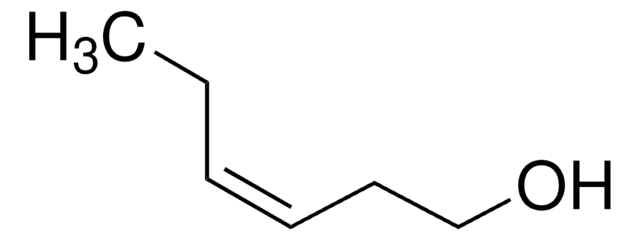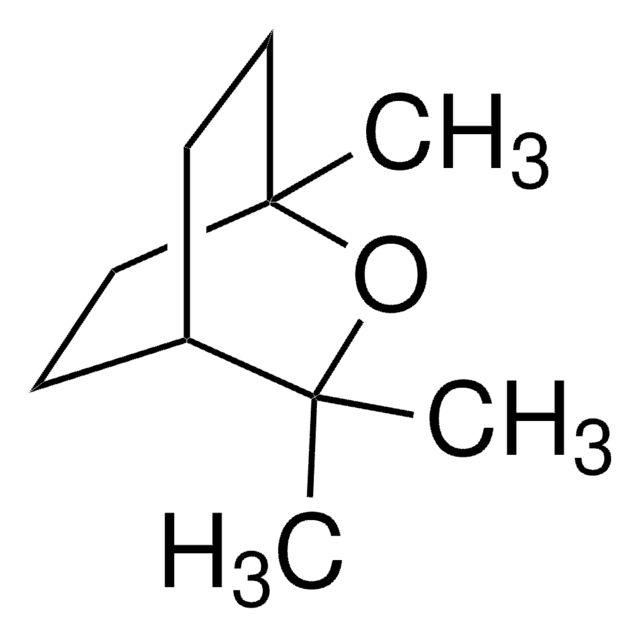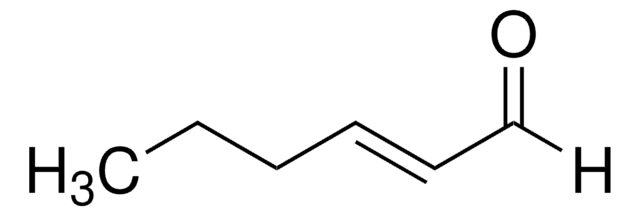W317101
cis-3-Hexenyl acetate
≥98%, stabilized, FCC, FG
Synonyme(s) :
(3Z)-3-Hexen-1-ol acetate, (3Z)-C-3-Hexenyl acetate, Leaf acetate
About This Item
Fragrance grade
Halal
Kosher
Produits recommandés
Source biologique
synthetic
Niveau de qualité
Qualité
FG
Fragrance grade
Halal
Kosher
Agence
follows IFRA guidelines
Conformité réglementaire
EU Regulation 1223/2009
EU Regulation 1334/2008 & 178/2002
FCC
Essai
≥98%
Contient
α-tocopherol, synthetic as stabilizer
Indice de réfraction
n20/D 1.427 (lit.)
pb
75-76 °C/23 mmHg (lit.)
Densité
0.897 g/mL at 25 °C (lit.)
Application(s)
flavors and fragrances
Documentation
see Safety & Documentation for available documents
Allergène alimentaire
no known allergens
Allergène de parfum
no known allergens
Propriétés organoleptiques
fresh; green; fruity; sweet
Chaîne SMILES
[H]\C(CC)=C(/[H])CCOC(C)=O
InChI
1S/C8H14O2/c1-3-4-5-6-7-10-8(2)9/h4-5H,3,6-7H2,1-2H3/b5-4-
Clé InChI
NPFVOOAXDOBMCE-PLNGDYQASA-N
Vous recherchez des produits similaires ? Visite Guide de comparaison des produits
Catégories apparentées
Description générale
Application
- Volatiles from cotton aphid (Aphis gossypii) infested plants attract the natural enemy Hippodamia variegata.: This study explored how volatiles, including cis-3-Hexenyl acetate, emitted by cotton plants infested with Aphis gossypii attract the natural predator Hippodamia variegata, highlighting its potential in biological pest control strategies (Yi et al., 2023).
Actions biochimiques/physiologiques
Mention d'avertissement
Warning
Mentions de danger
Conseils de prudence
Classification des risques
Flam. Liq. 3
Code de la classe de stockage
3 - Flammable liquids
Classe de danger pour l'eau (WGK)
WGK 2
Point d'éclair (°F)
134.6 °F
Point d'éclair (°C)
57 °C
Équipement de protection individuelle
Eyeshields, Gloves, multi-purpose combination respirator cartridge (US)
Faites votre choix parmi les versions les plus récentes :
Déjà en possession de ce produit ?
Retrouvez la documentation relative aux produits que vous avez récemment achetés dans la Bibliothèque de documents.
Les clients ont également consulté
Notre équipe de scientifiques dispose d'une expérience dans tous les secteurs de la recherche, notamment en sciences de la vie, science des matériaux, synthèse chimique, chromatographie, analyse et dans de nombreux autres domaines..
Contacter notre Service technique








